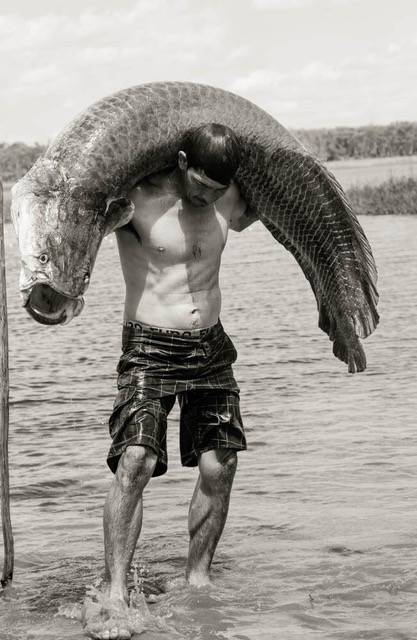Pirarucu Fish Leather
The Epitome of Sustainability
Native to the rivers of the Brazilian Amazon, the Pirarucu (Arapaima) fish is a local dietary staple. Rather than see the skins discarded, Piper & Skye transforms them into stunningly sustainable handbags.
12x Lower Carbon Footprint than Bovine
In a first-of-its-kind study led by Piper & Skye, Pirarucu fish leather (a direct food by-product) was found to have a carbon footprint that is 12x smaller than traditional bovine leather. It is for this very reason that Piper & Skye has chosen Pirarucu as its signature material.
Luxury With A Low Environmental Impact
Our Pirarucu leather is 100% free from harmful chemicals including heavy metals and nanoparticles. All organic waste generated during production is used as compost material, while water used in the tanning process is collected, pH-corrected, and then upcycled as irrigation water on reforestation farms.
A Material Infused With Sustainability
By utilizing Pirarucu, Piper & Skye supports a uniquely sustainable product cycle. Making greater use of the whole Pirarucu fish provides fishermen with economic benefits that de-incentivize the pursuit of more environmentally harmful practices such as cattle farming and deforestation. Read the CITES study here.
Raw Material Selection Criteria
Piper & Skye embodies the sustainable management and efficient use of natural resources within its stringent Material Selection Criteria. We work with our suppliers to ensure that management of the species is overseen by a governing body, which seeks to ensure the healthy and thriving biodiverse ecosystem in which the species lives. Our objective has always been to design luxury handbags that have the smallest possible environmental impact. The first step in this journey is the careful selection of materials that satisfy our material selection criteria. For example, using pirarucu which is a byproduct of a natural food source, makes more efficient use of the whole fish while simultaneously ensuring that the skins do not end up in a landfill or being burned. The following are the items we require in order to proceed with a certain raw material.
The species must meet at least one of the following criteria:
- Be used as a food source somewhere in the world.
- Be in over-population in its natural habitat.
- Be considered an invasive species.
The skins and leathers would be considered a waste product (headed for a landfill) unless passed-on to designers and artisans who create beautiful handbags and accessories with them.
Management of the species is overseen by a governing body (CITES, Fish and Wildlife Licensing, etc.) which seeks to ensure the healthy and thriving ecosystem in which the species lives.
There is no undue suffering in any form during theprocess of culling, fishing, or otherwise. We abide by theFive Freedoms originally defined by the UK’s FarmAnimal Welfare Council.
Select only suppliers that align with our goals to reduce hazardous and toxic chemicals used in the tanning,dying, and manufacturing processes.




